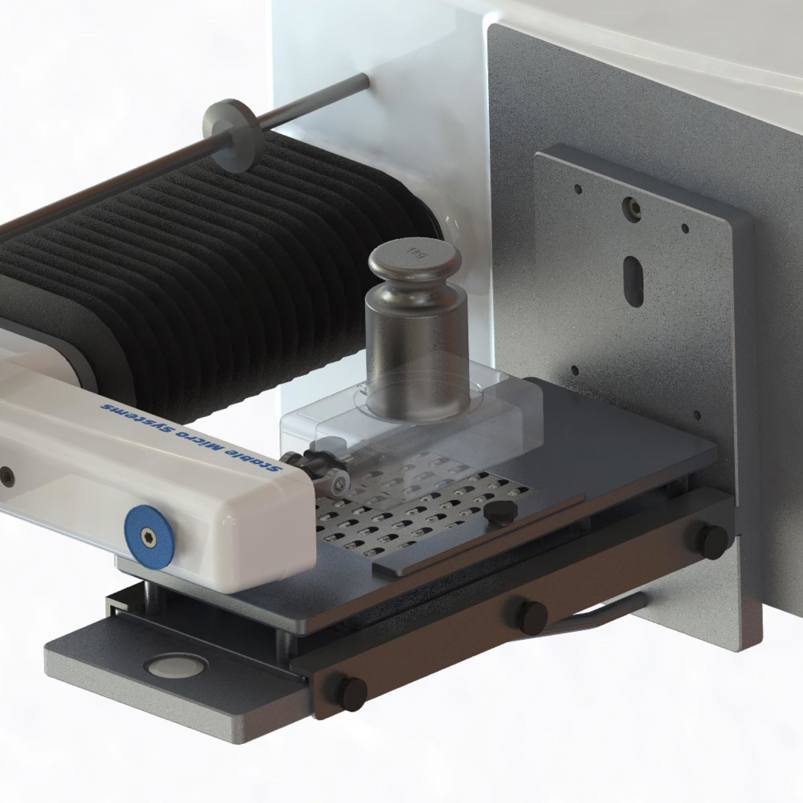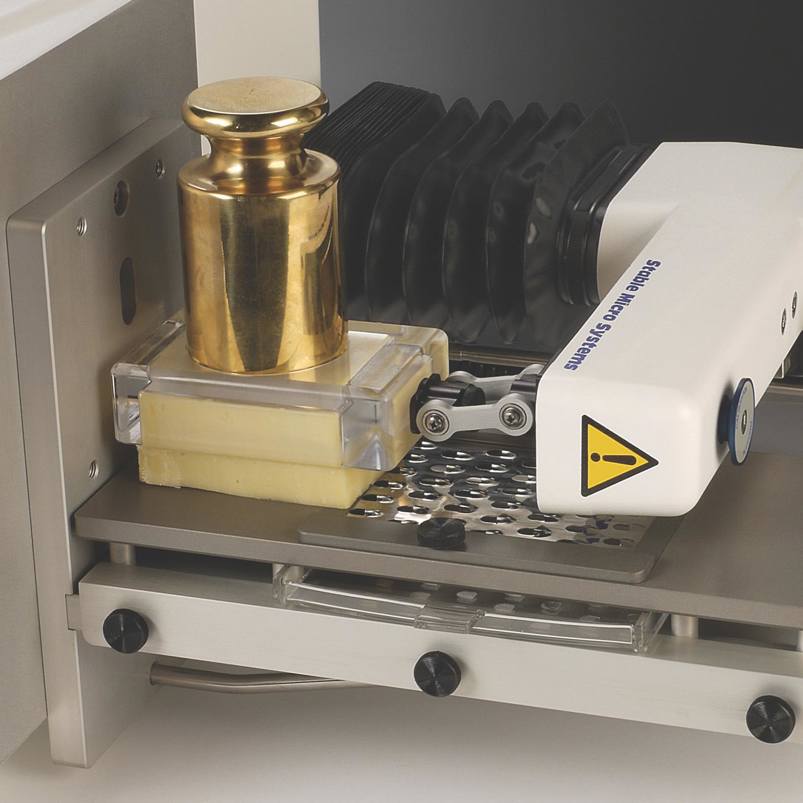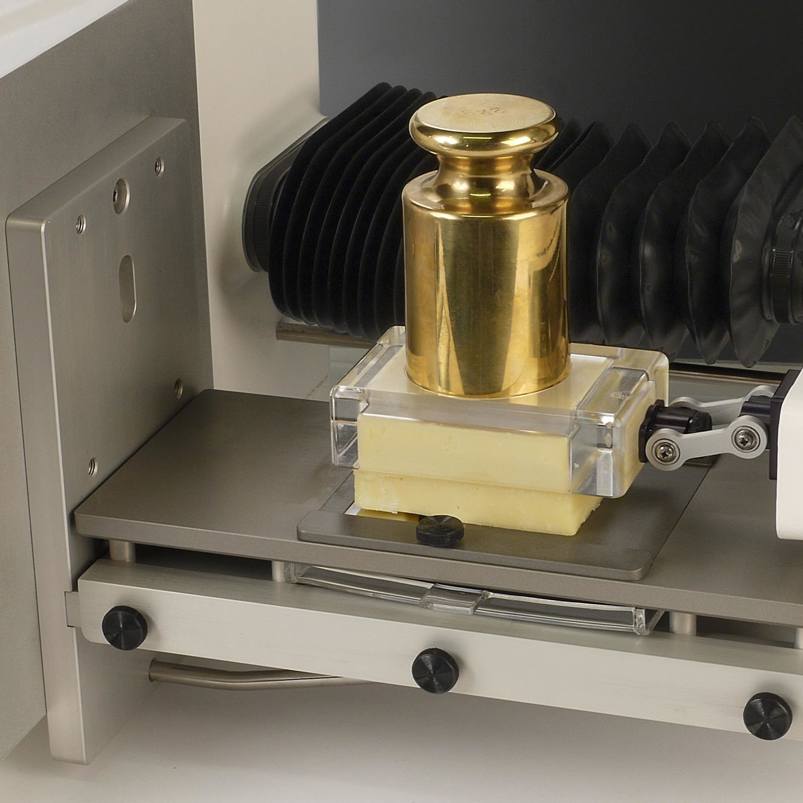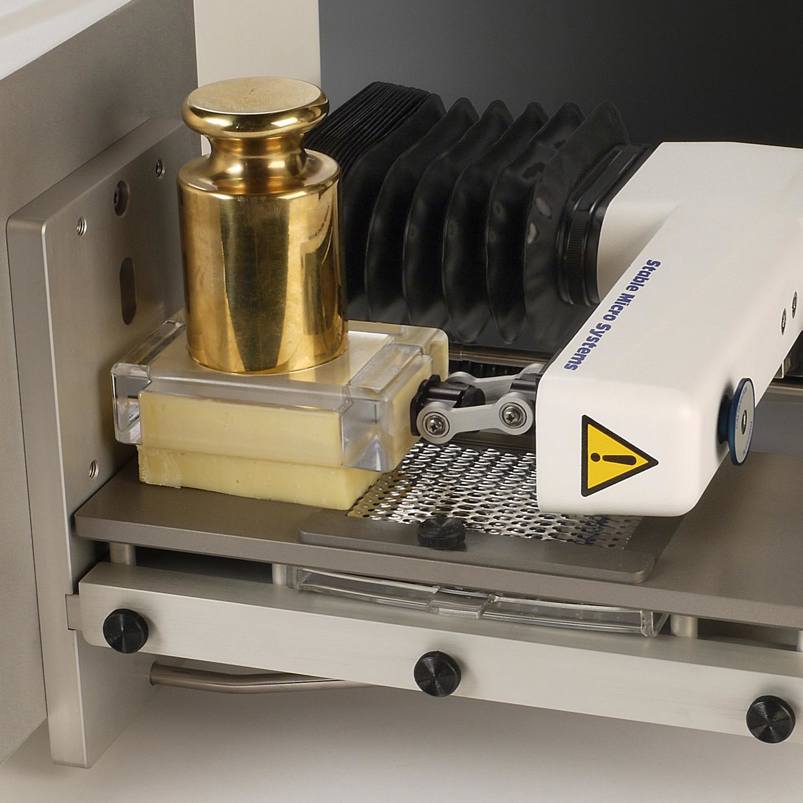Product overview
Dairies can now scientifically, objectively and repeatedly measure shreddability, enabling them to perfect their cheese recipes and production and packaging processes. Retail-ready grated cheese is a fast-growing market throughout Europe as the need for convenience and variety continues to dominate. As a result, cheese which might historically have been offered only in block form must now be able to withstand intense shredding, product transfer and packaging without clogging up machinery. Texture analysis helps dairies evaluate the mechanical properties that will influence not only their product’s mouthfeel, but also processability.
Cheese can be affected by varying environmental conditions which can have an adverse effect on shreddability which is also influenced by factors such as fat, moisture and salt content, pH and maturity. Similarly, the way cheese is handled and processed influences how well it shreds and therefore the quality of a finished shredded product.
The Grating Rig allows manufacturers to test many types of cheese, the results of which can help guide research and development plans, optimise processing parameters and inform and facilitate quality control. As well as evaluating cheese as an end-product in dairies, the Grating Rig can also be used in food processing environments to ensure it can withstand high speed processing in applications such as pizzas, ready meals, sauces and snack foods.
The attachment comprises a grating platform consisting of interchangeable grating faces and a sample block holder which acts as a sample template and, during the test, holds the sample in place. The Texture Analyser is used in a horizontal position (attached to a Horizontal Friction System, supplied separately) to ensure a constant application of force onto the sample. This configuration also means that samples can be tested repeatedly over several cycles without the need for reloading. Similarly, the location of a weight above the sample allows the sample to maintain constant contact with the grating platform face for a consistent measurement.
This attachment is adaptable, with the provision of two types of grating face and a mandoline blade for the measurement of sliceability. This ensures realistic testing conditions and provides valuable information about the quality and performance of the sample (e.g. cheese) as well as how it is best processed.
Typical graph
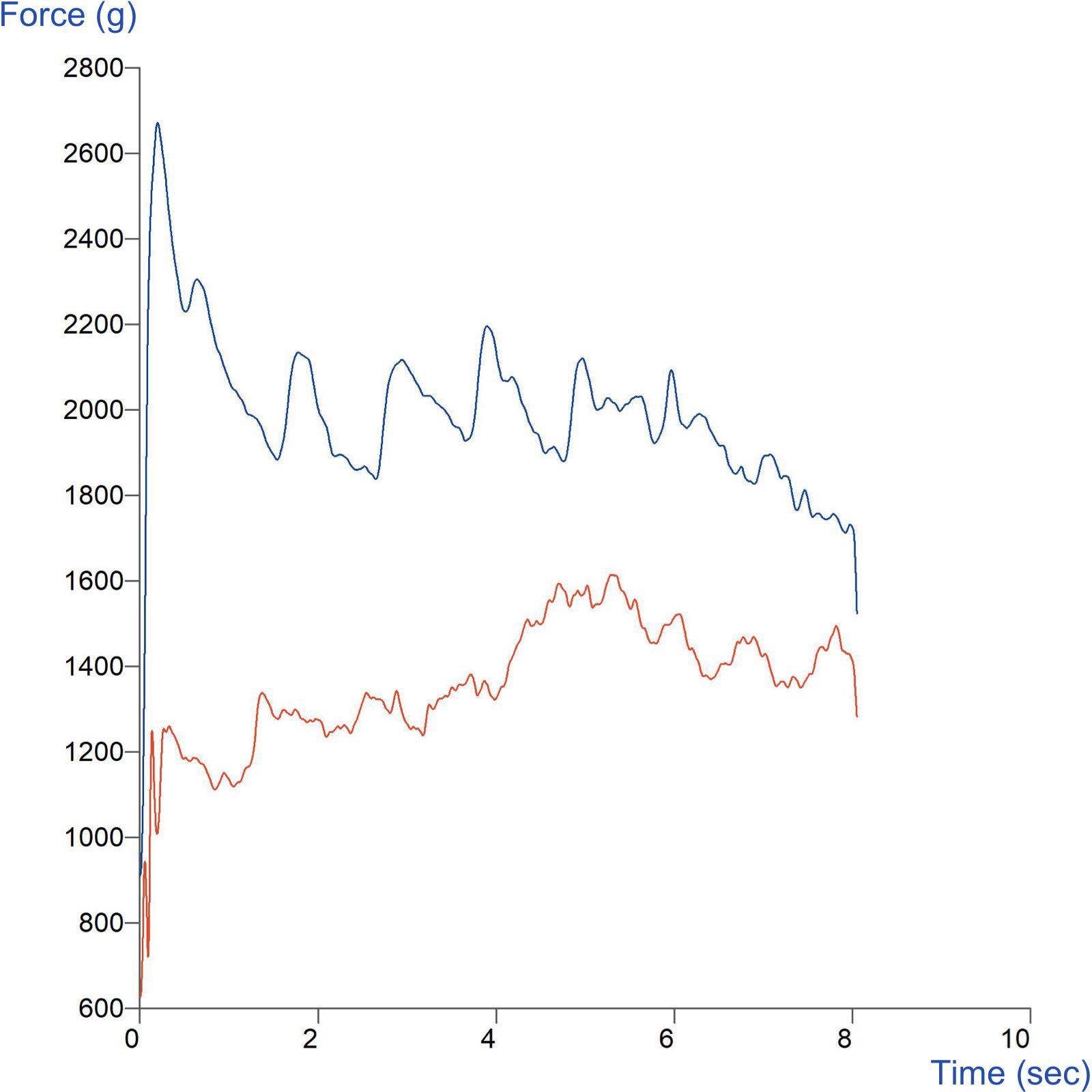
Technical information
Ideal sample form
Solid block sample form.
Benefits and limitations
- Provides a means of measuring grating force in a cyclic motion i.e. several grating cycles can be performed with the same sample.
- For use with the TA.XT2i, TA.XTplus and TA.XTplusC only. The Texture Analyser has to be laid on its side to operate this rig and the rig is attached to the Texture Analyser via a Horizontal Friction System – supplied separately.
Optional extras
Coarse insert for Grating Rig – A/GRC
Fine insert for Grating Rig – A/GRF
Mandoline insert for Grating Rig – A/GRM
Installation
Full installation instructions are provided within the Education Zone of the latest Exponent/Connect software version and on the technical information sheet accompanying this product.
Chemical compatibility
Stable Micro Systems probes and attachments are commonly made from four materials: anodised aluminium (AA6082 T6), stainless steel (316 T), Delrin (acetyl copolymer) and Perspex (polycarbonate).
In general use, probes and attachments made from these materials will be suitable for testing food products and inert non-food materials.
The four materials listed above are not universally resistant to all types of chemicals and as such the compatibility of the probe/attachment material with the product (to be tested) must be established to prevent damage to the probes and attachments. If the compatibility of the product with the probe is unknown to the customer then the chemical information about the product (Material Safety Data Sheet or Product Data Sheet) should be submitted to Stable Micro Systems. Stable Micro Systems will then assess the suitability of the probe/attachment material for use with the product and advise accordingly. If this advice is not sought then Stable Micro Systems will not accept liability for probes/attachments damaged by chemical attack from the product being tested.
Cleaning and maintenance
All probes and attachments may be cleaned in warm (or hand hot) water using a mild detergent. A soft brush may be used but abrasive cleaning aids should be avoided. Stable Micro Systems products should not be microwaved or cleaned in a dishwasher.
Screw threads should be lightly lubricated after drying using a light lubricant, e.g. petroleum jelly, mineral oil. This will aid the fitting and unscrewing of the item. Each component of a probe or attachment should be wrapped separately when stored, to avoid scratching or chipping. This will safeguard against any unnecessary damage to the accessory.

